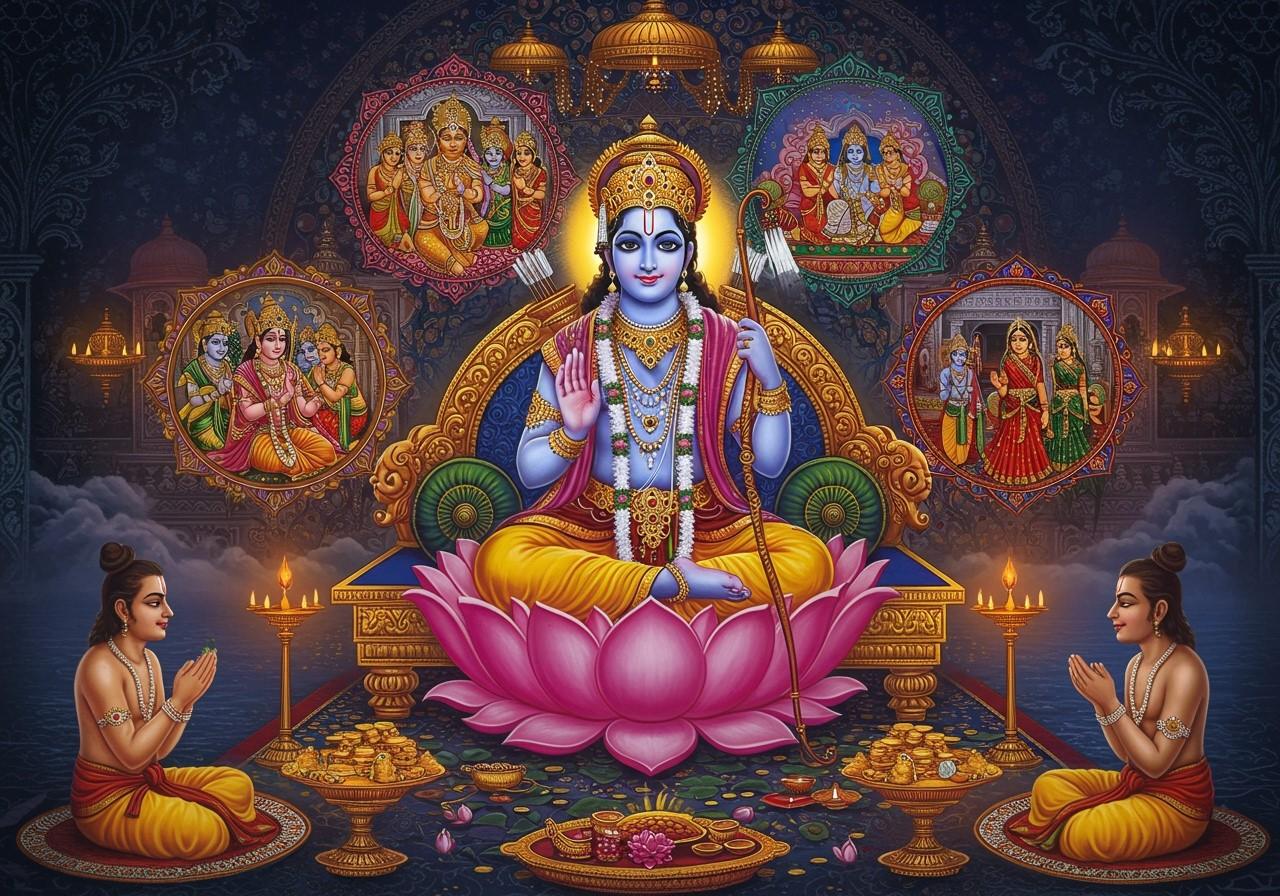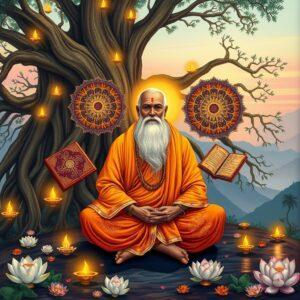
The Ramayana, a revered ancient Indian epic, imparts timeless wisdom through its captivating narrative. It recounts the saga of Lord Rama, offering profound philosophical insights into the four fundamental pursuits of human life: Dharma (righteousness, duty, and ethics), Artha (prosperity and material well-being), Kama (pleasure, desire, and love), and Moksha (spiritual liberation and release from the cycle of rebirth). Comprehending these teachings provides invaluable guidance for navigating the complexities of contemporary life.
What the Ramayana Teaches Us
The Ramayana transcends mere storytelling; it serves as a compass for ethical and moral conduct. It underscores the significance of:
- Dharma: Upholding principles of righteousness, duty, and ethical behavior. This involves acting with integrity, compassion, and adherence to moral principles, even in challenging circumstances.
- Artha: Pursuing prosperity and material well-being through honest and ethical means. Artha is not about accumulating wealth for selfish gains, but rather ensuring a secure and comfortable life for oneself and one’s family, while also contributing to society.
- Kama: Experiencing pleasure and fulfilling desires in a balanced and responsible manner, without compromising ethical values or causing harm to others. It recognizes the importance of love, intimacy, and emotional well-being as essential aspects of human life.
- Moksha: Striving for spiritual liberation and release from the cycle of birth and death. This involves cultivating detachment from material possessions, practicing selflessness, and seeking enlightenment through spiritual practices.
Each character and event in the Ramayana illuminates these pursuits, offering lessons on how to lead balanced and fulfilling lives grounded in wisdom and virtue.
The Essence of the Ramayana
The Ramayana narrates the tale of Lord Rama, his exile from his kingdom, and the abduction of his wife Sita by the demon king Ravana. It chronicles Rama’s arduous journey to rescue Sita, aided by his loyal brother Lakshmana and the devoted monkey god Hanuman. The epic explores themes of duty, loyalty, devotion, courage, and the ultimate triumph of good over evil. It is traditionally divided into seven Kandas (books):
- Bala Kanda (Book of Childhood): Details Rama’s birth, upbringing, and early life.
- Ayodhya Kanda (Book of Ayodhya): Focuses on Rama’s exile and the events leading up to it.
- Aranya Kanda (Book of the Forest): Describes Rama, Sita, and Lakshmana’s life in exile and Sita’s abduction.
- Kishkindha Kanda (Book of Kishkindha): Recounts Rama’s alliance with the monkey king Sugriva.
- Sundara Kanda (Book of Beauty): Narrates Hanuman’s heroic journey to Lanka and his discovery of Sita.
- Yuddha Kanda (Book of War): Depicts the epic battle between Rama’s army and Ravana’s forces.
- Uttara Kanda (Later Book): Covers the events after Rama’s return to Ayodhya and his reign.
Each Kanda portrays different phases of Rama’s journey and the moral dilemmas he confronts, offering profound insights into the human condition.
Dharma in the Ramayana
Dharma, or righteousness, forms the cornerstone of the Ramayana. Lord Rama embodies Dharma, steadfastly fulfilling his duties as a son, husband, and king, despite facing immense hardships. Key incidents that exemplify his unwavering commitment to Dharma include:
- Rama’s acceptance of his fourteen-year exile to honor his father’s promise. This demonstrates his unwavering commitment to filial duty and his respect for his elders.
- His unwavering resolve to rescue Sita, upholding his duty as a husband and his commitment to protecting his beloved.
These instances underscore the vital importance of living a life guided by truth, justice, and moral principles.
Artha in the Ramayana
Artha, the pursuit of material well-being and prosperity, holds significance in the Ramayana. The epic emphasizes that wealth should be acquired through righteous means and utilized for the welfare of society. Examples include:
- The prosperity and harmony that flourished in Ayodhya under Rama’s reign, showcasing the positive impact of righteous leadership and governance.
- The strategic alliances Rama forged with Sugriva and other allies during his quest to rescue Sita, demonstrating the importance of collaboration and resourcefulness in achieving noble goals.
These instances illustrate the importance of pursuing and utilizing wealth in a manner that benefits both individuals and society as a whole.
Kama in the Ramayana
Kama, the pursuit of pleasure and desires, is portrayed through various characters in the Ramayana. The epic acknowledges the importance of fulfilling desires while cautioning against excessive indulgence and unethical pursuits. Examples include:
- The deep and unwavering love between Rama and Sita, which serves as a model of a devoted and virtuous relationship.
- Ravana’s downfall, a direct consequence of his unchecked lust and his transgression of ethical boundaries in pursuing his desires.
These examples highlight the importance of balancing desires within the framework of ethical principles and moral responsibility.
Moksha in the Ramayana
Moksha, or spiritual liberation, represents the ultimate goal of human existence in the Ramayana. A life guided by Dharma, the righteous pursuit of Artha, and a balanced approach to Kama paves the path towards Moksha. Examples include:
- Rama’s unwavering faith and devotion to the divine, demonstrating the power of spiritual surrender and trust in a higher power.
- Hanuman’s selfless service and unwavering devotion to Rama, which exemplifies the transformative power of selfless action and devotion.
These examples highlight the path to spiritual liberation through devotion, selflessness, and surrender to divine will.
How Poojn.in Helps You Connect with Lord Rama’s Teachings
Poojn.in, India’s largest cultural goods and services store, offers a wide selection of products that can enrich your spiritual journey and help you embrace the teachings of the Ramayana. Our offerings include:
- Exquisite Laddu Gopal idols: Beautifully crafted idols of Lord Krishna as a child, symbolizing divine love and devotion.
- Divine Radha Krishna idols: Representing the eternal love and divine union of Radha and Krishna.
- Sandalwood incense sticks: Create a serene and sacred atmosphere for your prayers and meditation.
- Sandalwood puja kits: Containing all the essential items for performing traditional pujas and rituals.
Visit poojn.in today to explore our diverse collection of spiritual products and enhance your connection with the divine teachings of the Ramayana.
Conclusion
The teachings of the Ramayana, encompassing Dharma, Artha, Kama, and Moksha, possess enduring relevance in contemporary times. This ancient epic offers profound wisdom that empowers us to make ethical decisions, pursue prosperity with integrity, balance our desires responsibly, and strive for spiritual growth. By embracing these teachings, we can cultivate lives that are balanced, fulfilling, and harmonious with our deepest values. As we navigate the complexities of modern life, the timeless wisdom of the Ramayana serves as a guiding light, helping us stay true to our ideals and navigate the path towards a meaningful and purposeful existence.
Explore further insights into the Ramayana and its profound teachings through these related articles:
- Ramayana Characters and Life Lessons
- Dharma in the Ramayana: A Thematic Exploration
- Ramayana: Timeless Lessons for Modern Life


